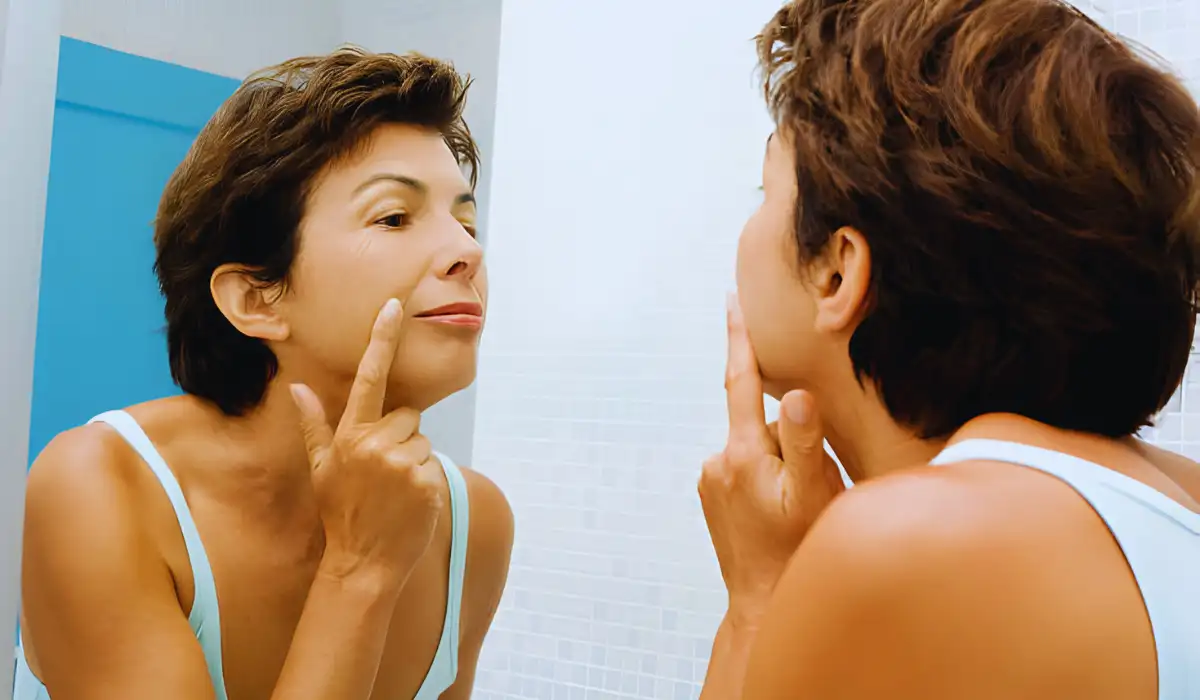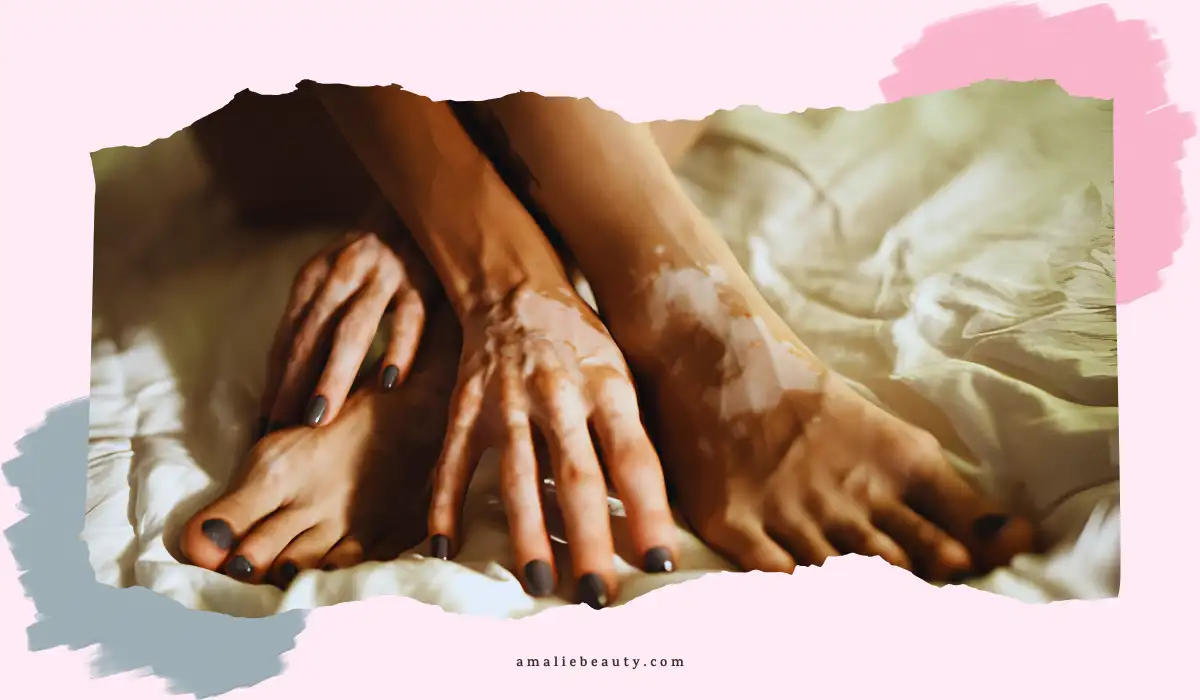Ever had an encounter with people who had white spots on their faces or other parts of their body? Well, that sometimes is misunderstood as a communicable disease, which might cause embarrassment in individuals affected by it.
Speaking from my experience, I have a son who has vitiligo, which is one of the terms given to these white spots on skin.
Well, at first, when it appeared on his skin, I had no idea about it, and now it’s been 4 years since his diagnosis, and we’ve done our fair share of research and investigation on these. There are tons of sharable things here, so I’m going to unveil those details related to these white spots with you:
What Is White Spots On The Skin?

Some might think of it as an unpleasant disease and despise those who have it, which is completely wrong from my perspective. Anyway, when it comes to these white spots on skin, the main reason behind their occurrence is melanin deficiency.
Melanin is a pigment present in your body that causes you to get a sun tan. Yes, that’s the reason you get tanned from going out in the sun. So, when it comes to being deficient in melanin hormone or pigment, individuals can get pale spots or patches on their skin at random places.
Usually, the affected areas are more sensitive to sun exposure, so make sure you aren’t going out in the sun without protection.
The reason behind it is the lack of melanin in your body; it’s the pigment that protects your dermal layer from getting damaged by UV rays and burns. Those white spots on the skin can cause irritation and burns if you aren’t careful outside in the sun.
Probable Reasons And Causes Of Tiny White Spots On Skin
Now, when it comes to the significant white spots on the skin, there might be certain culprits at work here. White spots on the skin are generally non-irritable or itchy, as they are caused by melanin deficiency.
However, if it does irritate you or itches, it’s not Vitiligo but something infectious, such as mycosis, eczema, or atopic dermatitis.
When you have one of these infections, whether it is eczema or mycosis, it can lead to white patches on your skin, along with itching and irritation.
Remember that these are completely different from vitiligo, which is a non-communicable condition. However, mycosis and eczema are highly communicable and can get quite serious if not taken care of.
Other probable reasons for the white spots on the skin might be peeling from sun exposure, white freckles, hypomelanosis, or tuberous sclerosis.
Peeling from sun exposure happens to individuals with highly sensitive or thin-layered skin, and going out in the sun can cause it. On the other hand, white freckles, hypomelanosis, and tuberous sclerosis are conditions that affect people with melanin deficiency as well.
Significant Signs And Indications Of White Spots On Skin
When it comes to the symptoms of these white spots on skin, some of the main signs are getting white patches on your lips, face, or any other parts. Now, if you have any spots on the areas with some hair on your body, it can also be a sign of vitiligo or other types of melanin deficiency.
These white spots on the skin appear slowly as a simple discoloration and then turn pale over time. Not only that, the edges of these patches can either be smooth or irregular, based on your condition.
When you have pale skin and it irritates you or itches, that might not be due to melanin deficiency but a fungal infection. In that case, make sure you consult your dermatologist immediately and get the proper care. As these infections can get worse quickly, leaving them untreated is the worst option for you.
Proper Diagnosis And Treatment Of White Spots
Diagnosing melanin deficiency is obviously not possible at home, and only these spots and sun sensitivity can alarm us about your condition.
After that, you have no other option but to seek remedies and treatments for your relief. Now, when it comes to getting relief from vitiligo or white spots on skin, one thing is sure: it’s going to be permanent.
However, in some of the mildest cases, it might diminish over time if you use prescribed ointments and creams. You’d need to take care of your sun sensitivity, though; for that, you can apply sunscreen with high SPF (Sun Protection Factor) that is available in stores.
On the other hand, if you have tiny white spots on the skin of any body parts that itch and irritate you, it might be eczema or mycosis, which are communicable and fungal infections.
For that, you can go for medications like Itraconazole and steroidal ointments or creams. These creams and capsules can help reduce the symptoms and might even work as permanent treatments for white spots on the skin.
How Can You Manage Your Behavior Around Affected Individuals?
Well, how you behave is completely your choice, but when it comes to those who have white spots on their skin, being rude and skeptical can hurt their self-esteem a lot.
Melanin deficiency is nothing to be afraid of and is not even communicable. So, make sure you are spreading awareness among those who don’t know about the condition, and try to normalize being around them.
Anyway, when it comes to treating these conditions, it might not be a choice if you already have vitiligo. All you can do is take care of your skin and apply sunscreen before going out in the sun.
FAQs
Q1: What are the white spots on skin disease?
These white spots on the skin usually happen due to melanin deficiency and are called vitiligo, hypomelanosis, or tuberous sclerosis.
Q2: Can white spots on my face get bigger over time?
At first, these spots are small and are called macules, but in some cases, they can get bigger and cover bigger areas over time.
Q3: Are white spots on the face permanent?
Unfortunately, white spots that are already pale and have covered larger areas might never disappear. However, small macules can diminish over time if you use proper ointments or creams.
References
- Brown F, et al. (2022). Idiopathic guttate hypomelanosis.
https://www.ncbi.nlm.nih.gov/books/NBK482182/ - What is vitiligo? (2014).
https://www.niams.nih.gov/health_info/vitiligo/vitiligo_ff.asp

